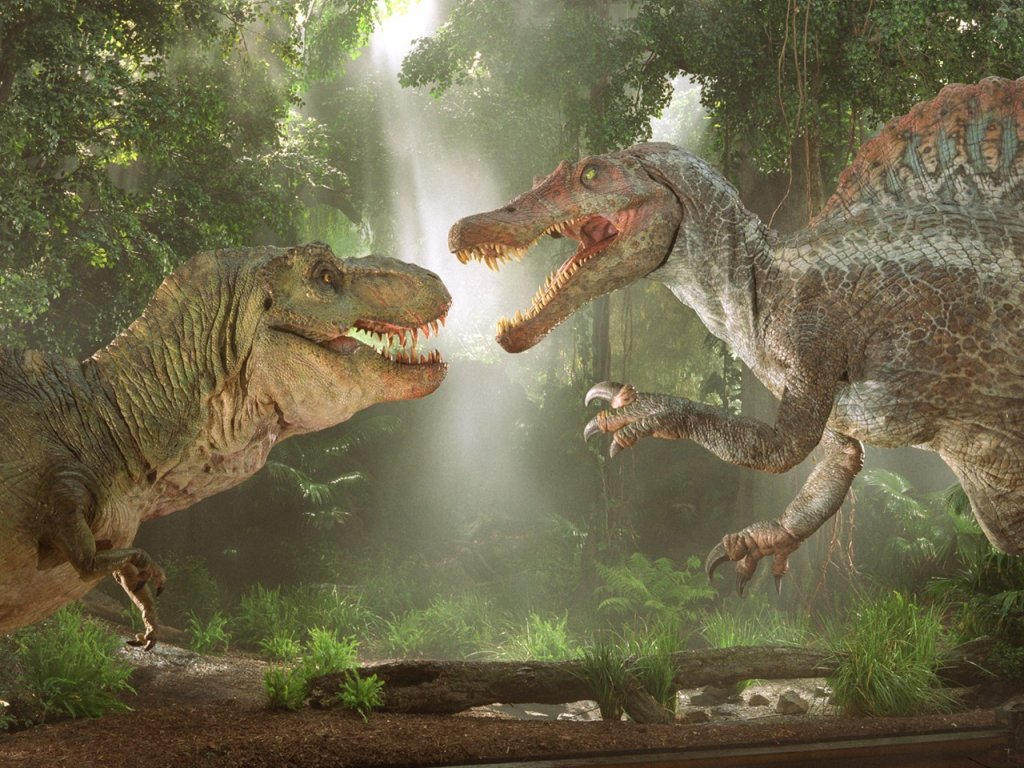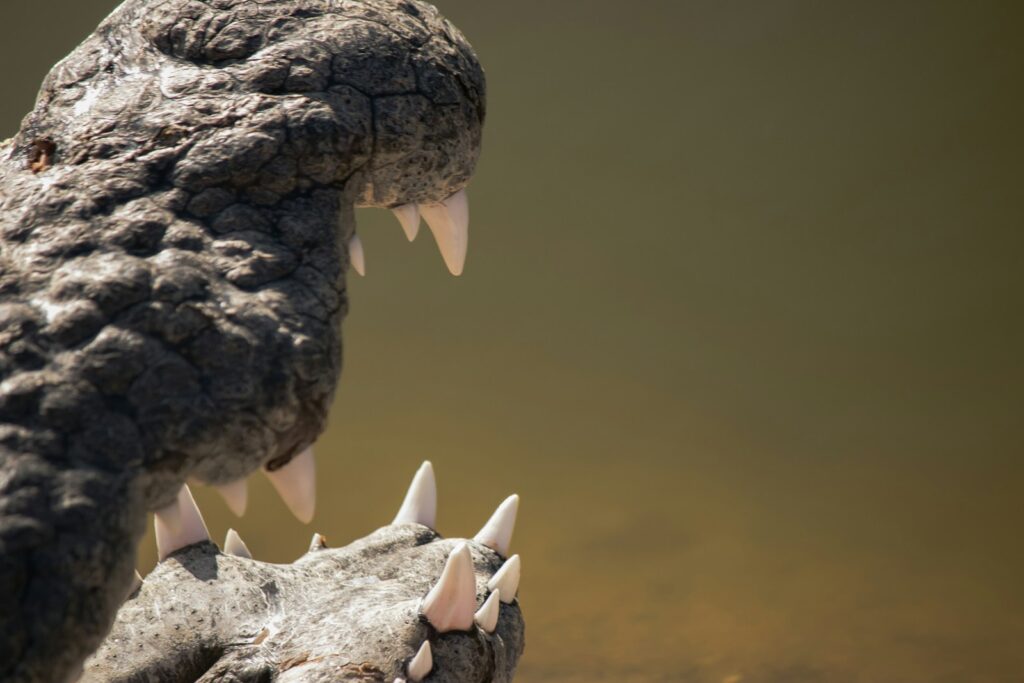Flying across the sky, birds are a testament to the wonders of evolution. But the ability to conquer the air didn’t emerge overnight—it developed through millions of years of adaptation and refinement. Two fascinating creatures—the ancient Microraptor from the Early Cretaceous period and the modern pigeon—offer a compelling window into the evolution of flight. Despite being separated by approximately 120 million years, comparing these aerial travelers reveals surprising similarities and striking differences in flight mechanics, anatomy, and ecological roles. This article explores how these two flyers, from drastically different eras, conquered the same fundamental challenge of defying gravity, albeit with unique evolutionary solutions.
The Evolutionary Timeline: From Dinosaurs to Birds
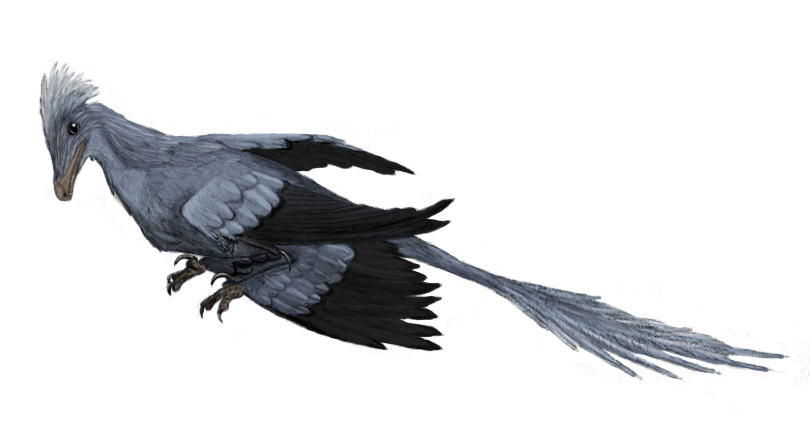
Microraptors lived approximately 120-125 million years ago during the Early Cretaceous period in what is now northeastern China. These small, feathered dinosaurs belonged to the dromaeosaurid family and represent a fascinating transitional form in the evolution of flight. Pigeons, on the other hand, are modern birds that evolved from theropod dinosaurs through a long evolutionary process. The oldest fossil evidence of modern pigeons dates back to the Miocene epoch, approximately 20 million years ago, though the pigeon family lineage is much older. This vast temporal gap between Microraptor and pigeons—spanning over 100 million years—makes their comparison particularly valuable for understanding the refinement of flight mechanisms through evolutionary time.
Microraptor: The Four-Winged Wonder
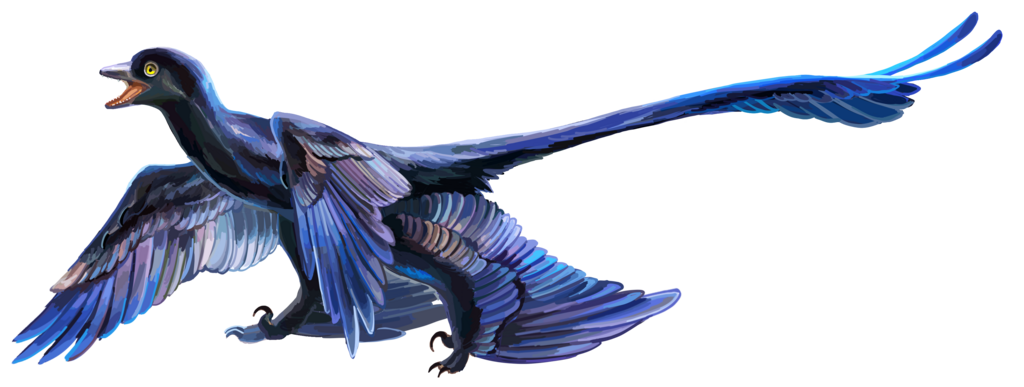
Microraptor stands out as one of paleontology’s most intriguing discoveries due to its unique four-winged configuration. This crow-sized dinosaur possessed large feathered wings on both its arms and legs, creating a distinctive biplane-like arrangement that has no exact parallel in modern flying animals. Its body was covered in iridescent, pennaceous feathers similar to those of modern birds, suggesting they were used for display as well as flight. Microraptor’s tail featured a diamond-shaped fan of feathers at the end that likely served as a stabilizing rudder during aerial locomotion. Fossil evidence indicates this animal weighed approximately 1 kilogram (2.2 pounds) and measured about 77-90 centimeters (30-35 inches) in length, with much of that length consisting of its long tail. This unique anatomy has made Microraptor central to debates about the origins of avian flight.
The Modern Pigeon: Aerial Engineering Perfected

The modern pigeon represents the culmination of millions of years of evolutionary refinement in avian flight mechanisms. With over 300 species in the family Columbidae, pigeons have successfully adapted to diverse environments across the globe, from urban centers to remote forests. The common pigeon (Columba livia) typically weighs between 300-500 grams and has a wingspan of approximately 64-72 centimeters (25-28 inches). Their anatomy demonstrates specialized adaptations for efficient flight, including a keeled sternum that anchors powerful flight muscles, hollow pneumatic bones that reduce weight, and a highly efficient respiratory system featuring air sacs that allow for continuous oxygen flow. Pigeons can fly at speeds of 77-92 kilometers per hour (48-57 mph) during sustained flight and have remarkable navigation abilities, using visual landmarks, the Earth’s magnetic field, and even infrasound to find their way across vast distances.
Wing Structure and Aerodynamics: Ancient vs. Modern
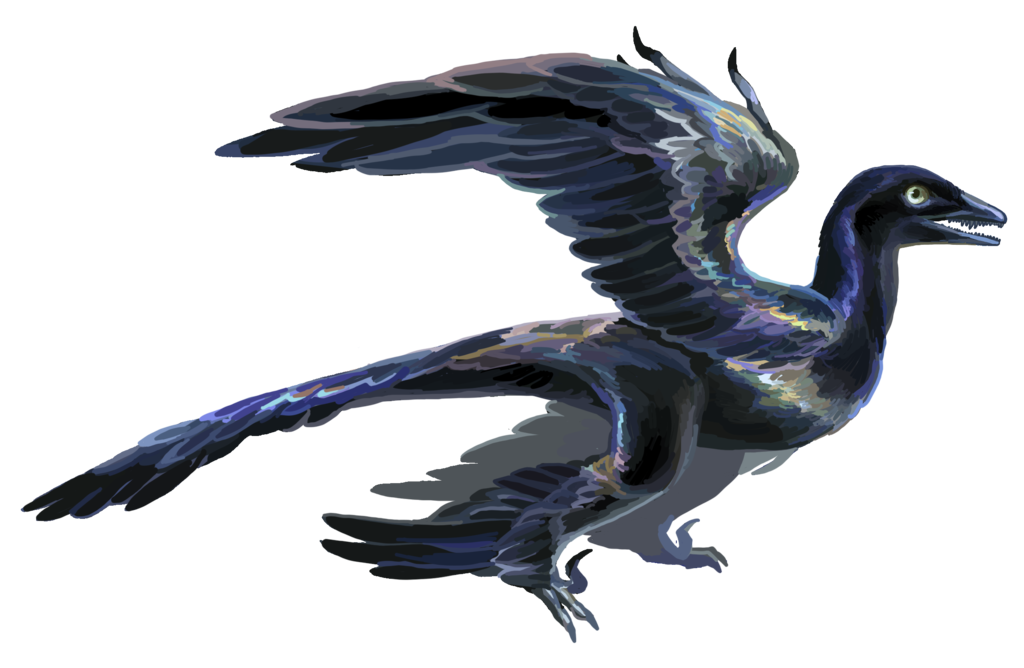
The wing structures of Microraptor and pigeons highlight both evolutionary continuity and significant refinement. Microraptor’s wings featured asymmetrical flight feathers similar to modern birds, suggesting they were used for powered flight rather than just gliding. However, Microraptor had feathered wings on both its arms and legs, creating a configuration that some paleontologists believe may have functioned as a biplane-like arrangement or possibly for controlled gliding between trees. Pigeons, by contrast, have evolved a highly specialized single wing pair with primary feathers that can be individually manipulated to alter wing shape during different flight phases. The pigeon’s wing has undergone anatomical specialization, with fused hand bones creating a rigid airfoil structure and a complex arrangement of covert feathers that improve aerodynamic efficiency. While Microraptor’s four-winged design represents an early experimental phase in flight evolution, the pigeon’s wings demonstrate the refined outcome of millions of years of natural selection for optimal powered flight.
Flight Capabilities: From Gliding to Precision Maneuvers
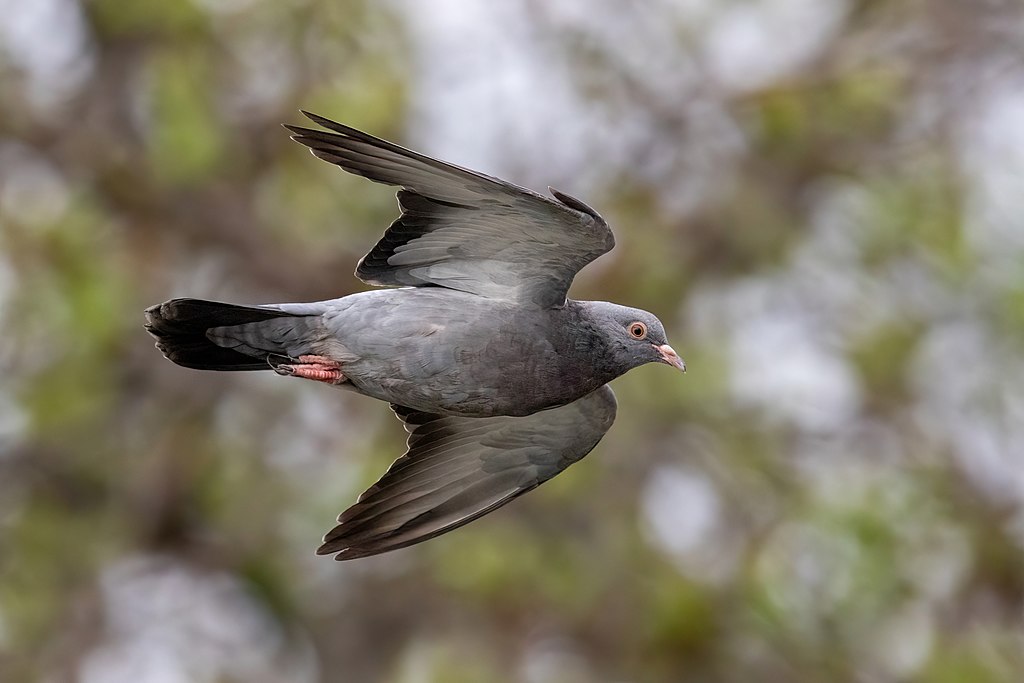
The flight capabilities of Microraptor and pigeons represent different stages in the evolution of aerial locomotion. Based on fossil evidence and biomechanical models, paleontologists believe Microraptor was primarily a glider that may have been capable of limited powered flight. Its most likely flight mode was phugoid gliding—descending from trees in controlled, undulating paths that alternated between glides and brief flapping phases. The hind limb wings would have created additional lift and potentially allowed for tighter turning radii than contemporary gliding animals. Pigeons, conversely, are masters of powered flight with remarkable maneuverability. They can take off nearly vertically, hover briefly, navigate through complex urban environments, and maintain speeds of up to 92.5 km/h (57.5 mph) during racing flights. Pigeons can also perform precise landings on narrow perches and fly continuously for hundreds of kilometers during migration or homing events. This dramatic difference in capability highlights the extensive refinement of flight mechanisms that occurred during avian evolution after the Microraptor stage.
Skeletal Adaptations for Flight
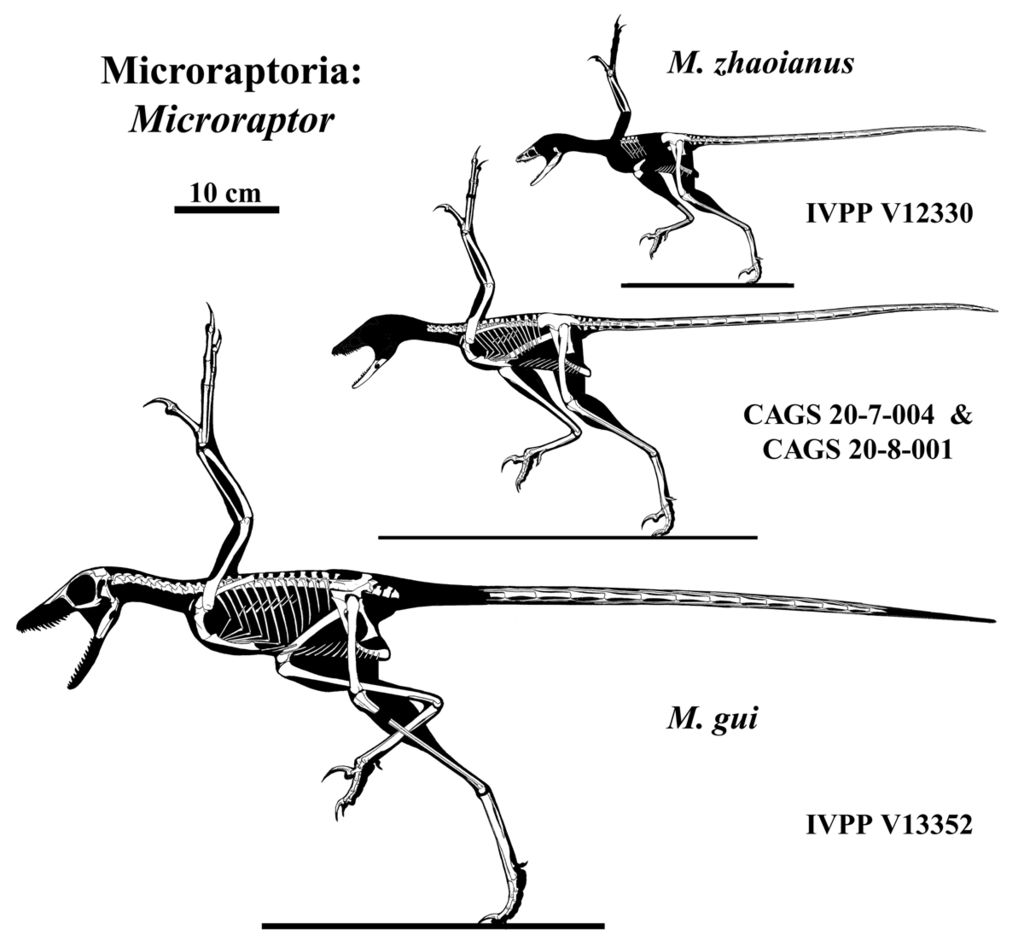
The skeletal systems of Microraptor and pigeons reveal the evolutionary journey toward lightweight yet strong flight-adapted frames. Microraptor had begun developing some avian characteristics, including hollow bones that reduced weight while maintaining structural integrity. However, it retained many dinosaurian features such as a long bony tail, unfused hand bones, and a sternum that lacked the pronounced keel seen in modern birds. Pigeons exhibit the culmination of skeletal adaptations for flight, including a deeply keeled sternum that anchors powerful pectoral muscles, a fused collarbone forming the wishbone (furcula) that acts as a spring during wing beats, and a highly modified skull with reduced weight. The pigeon skeleton also features extensive pneumatization—air spaces connected to the respiratory system that further reduce weight—and specialized wrist joints that allow for the complex folding of wings when not in flight. These skeletal differences illustrate how natural selection has refined the avian body plan over millions of years to maximize flight efficiency.
Respiratory Systems and Energy Efficiency

The respiratory systems of Microraptor and pigeons highlight a critical evolutionary advancement in vertebrate physiology. Microraptor likely possessed an intermediate respiratory system that had begun developing some avian characteristics. Fossil evidence suggests it may have had air sacs similar to those of modern birds, though less extensive and sophisticated. Modern pigeons feature a highly efficient unidirectional respiratory system with nine air sacs that allow for continuous oxygen flow during both inhalation and exhalation. This system enables pigeons to extract oxygen while flying at high altitudes where oxygen levels are lower. The pigeon’s respiratory efficiency is crucial for powered flight, which requires tremendous energy expenditure—during intense flying, a pigeon’s metabolic rate can increase up to 16 times its resting level. This respiratory advancement represents one of the most significant physiological innovations in vertebrate evolution and was likely developing but not fully realized in Microraptor, contributing to its more limited flight capabilities compared to modern birds.
Habitat and Ecological Niches

Microraptor and pigeons occupied distinctly different ecological niches shaped by their respective time periods and flight capabilities. Microraptor lived in the dense forests of Early Cretaceous China, an environment dominated by coniferous trees, ginkgoes, and early flowering plants. Paleontologists believe it was primarily arboreal, using its four wings to glide between trees while hunting small vertebrates, fish, and possibly insects. The forest canopy provided both safety from larger predators and a launch platform for its gliding lifestyle. Modern pigeons have adapted to an extraordinary range of habitats across every continent except Antarctica. While many species remain forest dwellers like their distant ancestors, others have specialized for grasslands, mountains, deserts, and perhaps most famously, urban environments. The rock pigeon (Columba livia) has become one of the most successful urban adapters, using building ledges as substitutes for their ancestral cliff nesting sites. This habitat versatility, enabled by their advanced flight capabilities, has allowed pigeons to thrive in human-modified landscapes where Microraptor’s more primitive flight system would have been severely disadvantaged.
Feeding Strategies and Diet

The feeding adaptations of Microraptor and pigeons reflect their different evolutionary positions and flight capabilities. Microraptor was primarily carnivorous, with fossil evidence showing stomach contents that included small birds, mammals, and fish. Its sharp, curved teeth were typical of predatory dinosaurs and ideal for gripping prey. Some specimens have been found with fish remains in their stomach cavities, suggesting they may have swooped down to catch aquatic prey from the water’s surface. Modern pigeons, by contrast, are primarily granivorous (seed-eating) with specialized adaptations for this diet. Unlike Microraptor, pigeons lack teeth entirely and instead use their flexible bills to pick up seeds and a muscular crop to store and begin digesting food. Most remarkable is the pigeon’s ability to produce “crop milk,” a nutrient-rich substance secreted from the lining of the crop that both male and female pigeons feed to their young—a specialized adaptation completely absent in Microraptor and other non-avian dinosaurs. These dietary differences highlight how flight adaptations have influenced feeding strategies across evolutionary time.
Reproductive Strategies: From Eggs to Squabs
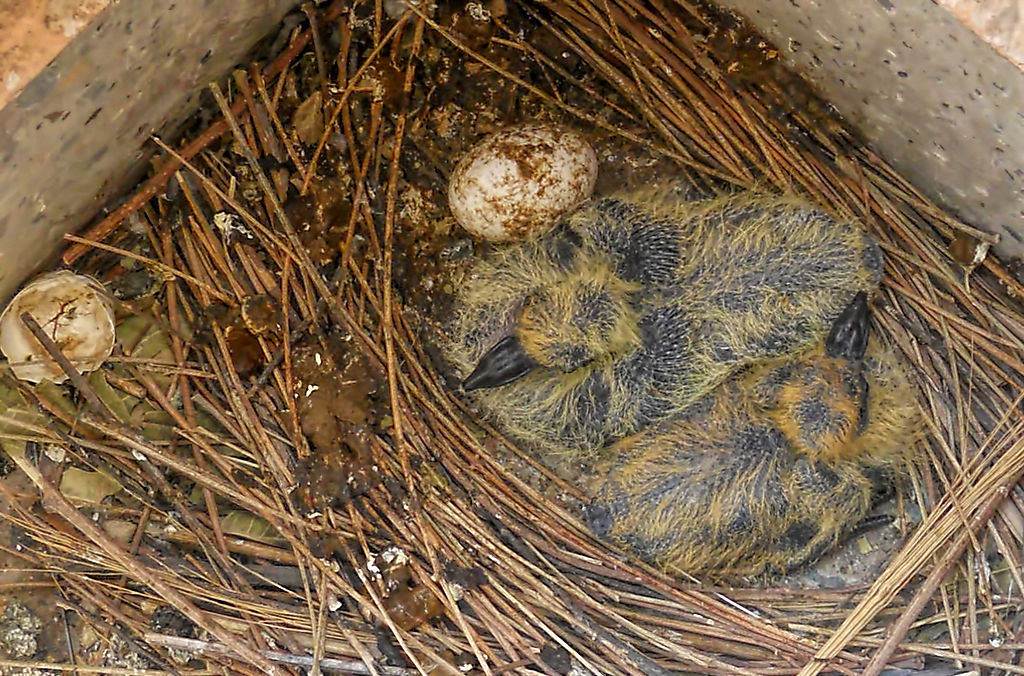
The reproductive biology of Microraptor and pigeons reveals both ancient continuities and significant evolutionary innovations. Like all dinosaurs, Microraptor laid eggs, though direct fossil evidence of Microraptor nests remains elusive. Based on related dinosaur species, paleontologists believe Microraptor likely laid relatively small clutches of eggs and may have exhibited some form of parental care. The eggs would have had the characteristic hard shell of archosaur eggs, though smaller than those of larger dinosaur species. Modern pigeons have retained the fundamental egg-laying reproduction of their dinosaurian ancestors but have evolved specialized parental care strategies. Pigeons typically lay just two eggs per clutch and both parents participate in incubation and chick-rearing. Most remarkably, pigeons produce highly nutritious crop milk to feed their young during the first days of life—an adaptation that allows their chicks (called squabs) to grow at one of the fastest rates among birds, reaching adult size in just 30 days. This intensive parental investment strategy represents a specialized evolution of the more generalized care that might have been present in Microraptor.
Feather Structure and Function
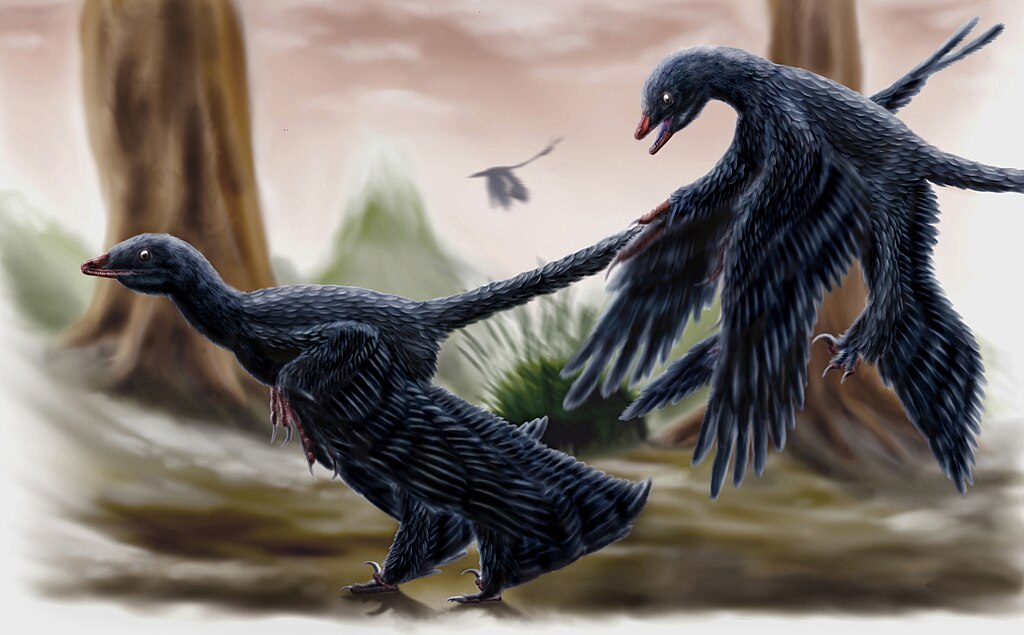
The feathers of Microraptor and pigeons demonstrate both evolutionary continuity and significant refinement in structure and function. Microraptor possessed pennaceous feathers with a central shaft (rachis) and barbs forming a flattened vane—fundamentally similar to modern bird feathers. Remarkably, microscopic analysis of Microraptor fossils has revealed evidence of melanosomes (pigment-containing structures) suggesting its feathers had an iridescent, glossy black appearance similar to modern crows. However, Microraptor likely lacked the complex hooked barbules that give modern bird feathers their ability to “zip” back together when disrupted. Pigeons have evolved highly specialized feather structures with hooked barbules that maintain feather integrity during flight, water-resistant coatings produced by the preen gland, and specialized down feathers for insulation. Pigeons also undergo a complex molting process that replaces feathers sequentially to maintain flight capability throughout the year—a sophisticated biological system that was likely absent or less developed in Microraptor. These feather adaptations reflect millions of years of evolutionary refinement focused on optimizing flight performance, thermoregulation, and display capabilities.
Sensory Systems and Navigation

The sensory capabilities of Microraptor and pigeons highlight significant evolutionary advancements in neurological systems related to flight. Based on endocasts of related dinosaur species, paleontologists believe Microraptor had well-developed vision adapted for hunting, with eyes positioned on the sides of its head providing wide visual coverage but limited binocular vision. Its brain structure likely included enlarged optic lobes but lacked the specialized regions for processing complex spatial information found in modern birds. Modern pigeons possess extraordinarily sophisticated sensory systems optimized for flight navigation. Their vision is remarkable, with the ability to see ultraviolet light and detect polarized light patterns that help orient using the sun even on cloudy days. Pigeons have magnetoreceptive cells containing iron compounds that function as microscopic compasses, allowing them to detect Earth’s magnetic field for navigation. Additionally, they can detect infrasound (low-frequency sound waves) that travel hundreds of miles, potentially helping them map large-scale geographic features. This sensory sophistication, coupled with specialized brain regions for spatial memory, underlies the pigeon’s famous homing ability—a capability that would have been rudimentary at best in Microraptor.
The Evolutionary Significance of Flight Comparisons

Comparing Microraptor and pigeons provides crucial insights into the evolutionary trajectory of powered flight in vertebrates. Microraptor represents an experimental phase in flight evolution—its four-winged configuration was ultimately an evolutionary dead end, but it demonstrates that nature explored multiple possible configurations before arriving at the standard two-winged design of modern birds. The transition from Microraptor-like gliding to the powered flight of modern pigeons involved numerous coordinated changes across multiple biological systems: skeletal structure, muscle arrangement, respiratory efficiency, neurological control, and feather morphology. This comparative view challenges simplistic models of evolutionary progression by revealing that flight evolution wasn’t a straightforward path but rather a complex process with multiple possible solutions being tested through natural selection. Understanding these evolutionary experiments helps scientists better appreciate the remarkable biological engineering that makes modern bird flight possible and provides context for other evolutionary transitions in vertebrate history.
Conservation Implications and Future Research

The comparison between extinct flyers like Microraptor and modern birds like pigeons carries significant implications for conservation biology and future research directions. While Microraptor vanished millions of years ago, its study provides baseline data about flight adaptations that help scientists understand the vulnerability of modern flying species to environmental changes. Research on the transition from dinosaur gliding to avian flight informs conservation efforts by highlighting how specialized adaptations can become evolutionary liabilities when environments change rapidly. Future research using advanced technologies like computer tomography scanning of fossils and computational fluid dynamics modeling promises to reveal more details about Microraptor’s flight capabilities and evolutionary relationships. For modern pigeons, ongoing research into their remarkable navigation abilities may yield applications in fields ranging from neuroscience to artificial intelligence. As climate change and habitat destruction threaten flying animals worldwide, the evolutionary lessons from comparing Microraptor and pigeons remind us of both the resilience and fragility of flight adaptations developed over millions of years.
Conclusion
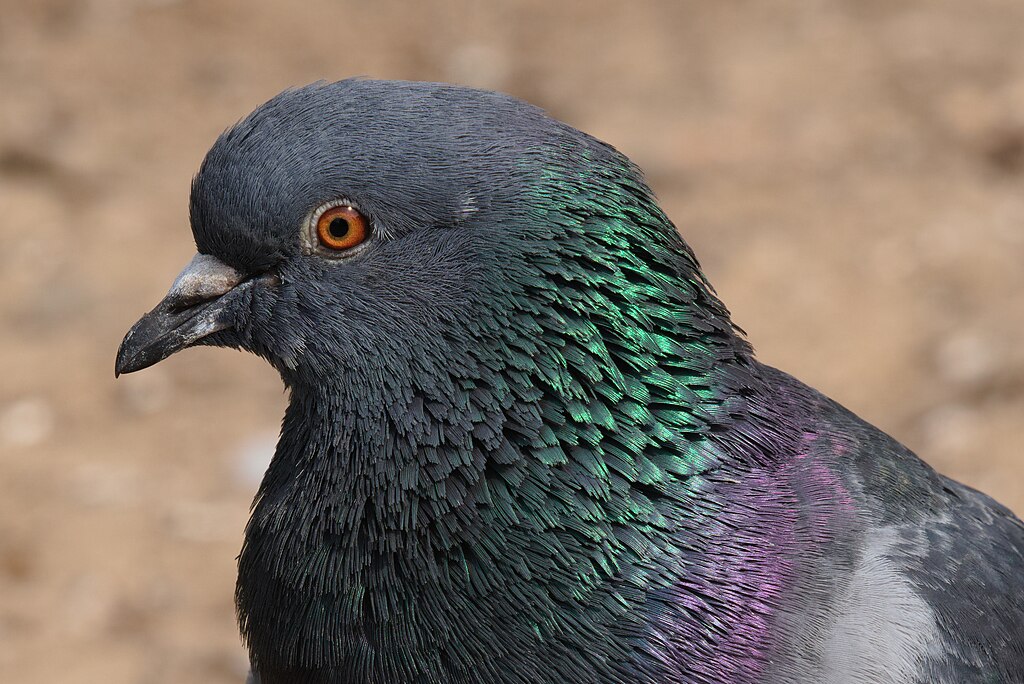
The comparison between Microraptor and pigeons offers a fascinating window into the evolution of flight across deep time. From Microraptor’s experimental four-winged configuration to the highly refined flight machinery of modern pigeons, we see both the continuity of evolutionary principles and the tremendous power of natural selection to shape and perfect biological systems. Though separated by 120 million years, these flyers faced similar physical challenges—gravity, air resistance, energy management—and evolved solutions that reflect both their shared ancestry and their unique evolutionary contexts. By studying these distant aerial relatives, we gain deeper appreciation for the complex evolutionary journey that produced the diverse flying creatures that grace our skies today. The story of flight evolution continues to unfold, with each fossil discovery and biological study adding new details to this remarkable chapter in Earth’s history.

